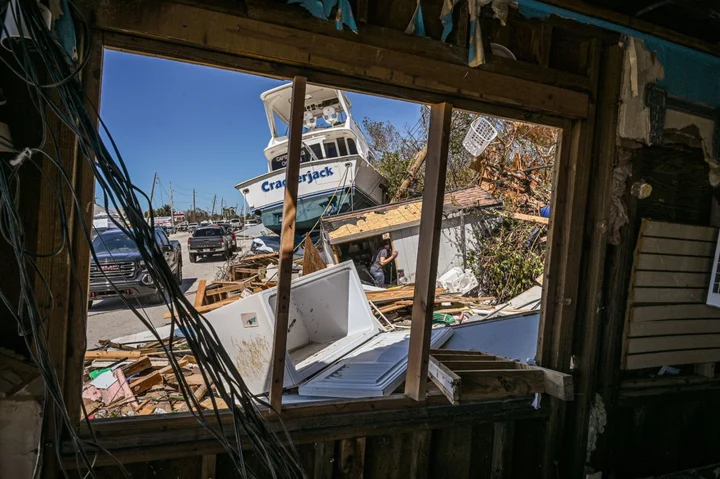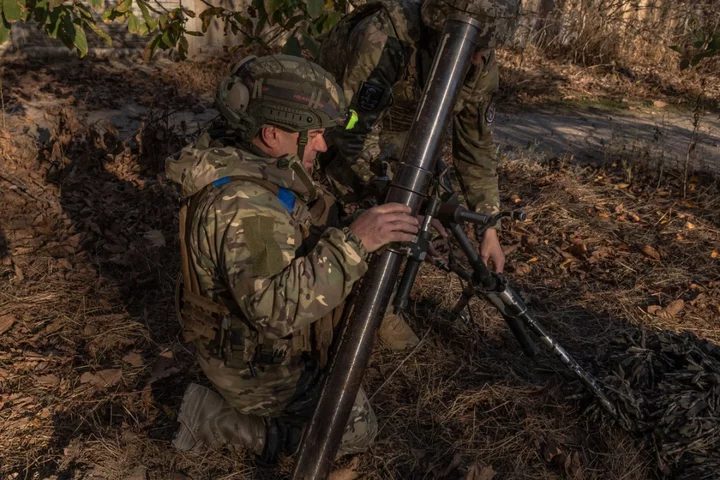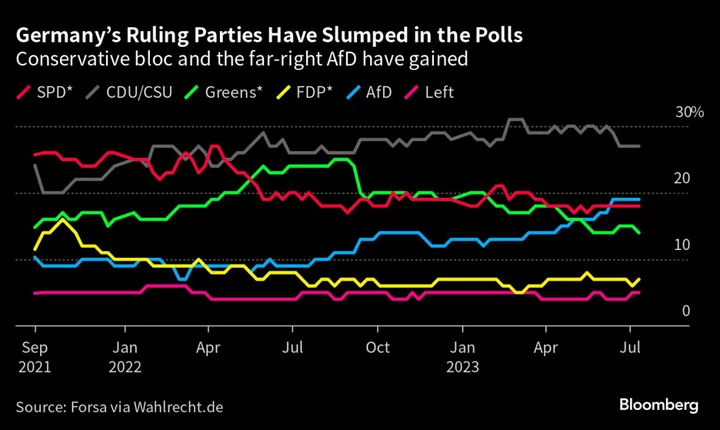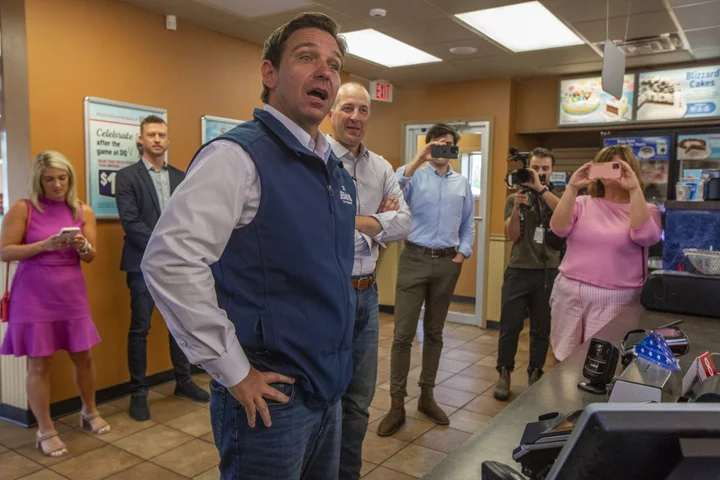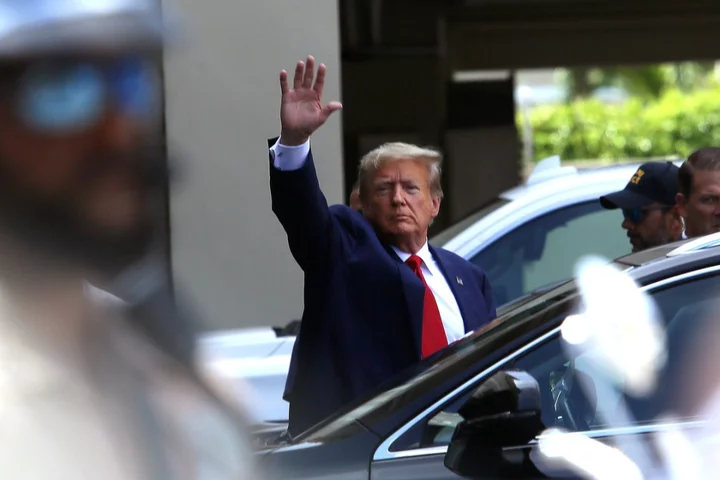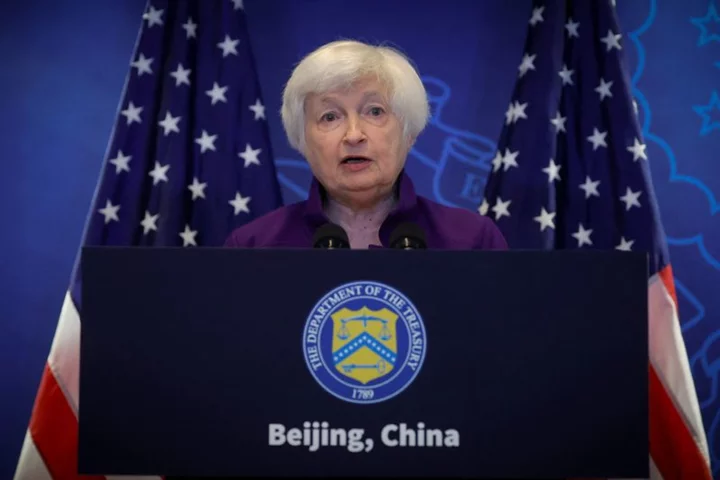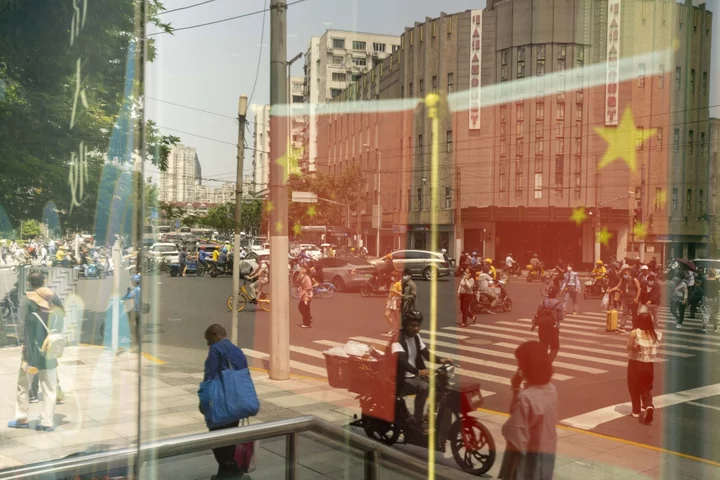Australia’s central bank kept its key interest rate unchanged as the board assesses the impact of its more than yearlong tightening cycle on the economy and inflation, while leaving the door open to future hikes.
In its second pause of the year, the Reserve Bank on Tuesday held its cash rate at 4.1%, as predicted by about 60% of economists surveyed by Bloomberg. The decision will allow the board more time to reflect on the state of the economy, as well as the outlook and associated risks, the RBA said.
Money markets now see a 70% chance of two more rate hikes this year — down from being fully priced in late last month — despite Governor Philip Lowe reiterating in his statement that further tightening may be needed. The currency fell and the yield on policy-sensitive three-year bonds also declined.
“We interpreted the attending statement as a ‘hawkish hold’,” said Andrew Boak, chief economist for Australia at Goldman Sachs Group Inc. He added, however, that the decision “signals a more gradual approach to tightening” and now sees quarter-point rate hikes in August, November and December.
Boak highlighted three factors that suggest the tightening cycle isn’t over:
- Lowe incrementally upgraded his language around the labor market
- The governor described inflation as still being “too high”
- He cautioned that “some further tightening may be required”
The decision extends a series of staccato-like policy moves from the RBA: hiking in February and March, pausing in April, raising in May and June and then holding in July as it adjusts to volatile economic data. It contrasts with more sustained tightening cycles by peers in the US and Europe, whose central bank chiefs recently said they still had a ways to go in tamping down inflation.
Similar to April’s decision to stand pat, holding fire this month will allow the RBA an opportunity to study the quarterly inflation data — the most comprehensive catalog of prices — due on July 26. The central bank staff will also deliver updated economic forecasts for the August meeting.
Lowe said any future hikes will “depend upon how the economy and inflation evolve.” He also reiterated that the rate-setting board was resolute in its determination to return inflation to target and “will do what is necessary to achieve that.”
What Bloomberg Economics Says
“There’s a chance that could turn out to be jawboning. But our base-case is for a final 25-basis-point rate hike in August when the RBA conducts a full forecast review.”
— James McIntyre, economist
For full note, click here
Tuesday’s pause reflects the governor’s efforts to bring the economy in for a soft landing while keeping hold of some of the employment gains made during the pandemic. The RBA has raised rates by 4 percentage points compared with 5.25 points by nearby New Zealand and the Federal Reserve’s 5 points.
The lags associated with policy transmission are another reason the RBA is moving cautiously. The looming expiry of a large number of home loans fixed at record low rates during the pandemic is a cloud on the horizon. Around 90% of fixed mortgages rolling off this year will see repayments increase by 30% or more, RBA research shows.
“Since the June meeting there has been a lot more talk about recession and I wonder if that played into their decision today,” said Diana Mousina, deputy chief economist at AMP Capital Markets. “They don’t want to be seen as causing a recession.”
Lowe has said the RBA is in data-dependent mode as it keeps a close eye on consumer spending, labor costs, business surveys and inflation. While goods inflation and household consumption are showing signs of easing, core prices remain above 6%, well in excess of the bank’s 2-3% target.
“The board remains alert to the risk that expectations of ongoing high inflation will contribute to larger increases in both prices and wages, especially given the limited spare capacity in the economy and the still very low rate of unemployment,” Lowe said in his statement.
Unusually, even after one of its most aggressive tightening cycles in decades, Australian house prices are rebounding, a worry for RBA policymakers as the “wealth effect” may spur consumers to resume stronger spending.
Yet underscoring the need for the RBA to move with caution, Australian households are among the most leveraged in the developed world, with a debt-to-income ratio of 188%.
Tuesday’s decision comes as Treasurer Jim Chalmers is due this month to make an announcement on the next RBA governor, with Lowe’s seven-year term expiring in mid-September. Some observers have warned that a move to replace Lowe during a tightening cycle may be perceived as political influence, particularly as his two predecessors received three-year extensions.
The governor has acknowledged that his policy path to cooling inflation while preserving employment gains is “narrow,” while reiterating that the bank will do what it takes to bring inflation back to target.
The RBA chief will have an opportunity to further explain the board’s decision and outlook for the economy next week in a speech in Brisbane.
“This looks a wait-and-see meeting and a gauge of impact from previous tightening,” said Dwyfor Evans, head of APAC macro strategy at State Street Global Markets. “The bias of the remarks are sufficiently hawkish to keep further hikes on the table and ensure August remains a live meeting.”
--With assistance from Tomoko Sato, Matthew Burgess and Georgina McKay.


